All families who start the zero-waste journey know the stress of the beginning of the school year. From the first week, we feel "attacked" by the list of school supplies to be provided for each child, each course, each type of teacher: English, drawing, maths, etc.
But what can be done to reduce the amount of waste produced each year by these specific requests?
From notebooks to be covered in plastic, half-used plastic Bic, coloured pencils, markers, paints and brushes for teachers that change every year.
Folder sizes that no longer fit, the filing system that requires 200 plastic sleeves.
It's a real headache and the impression one gets from the new list is that it must be different from those of other years!
However, the ideal world would be for teachers to harmonise their lists and agree to limit the number of supplies...
In the meantime... ask your child's teacher to limit the distribution of unnecessary papers and not to impose plastic folders. This type of request is quite well accepted by teachers.
Other quite simple alternatives exist, follow me:
CONTENTS:
Reduce the school list to the bare essentials
Search the drawers of the house
Second-hand: online or in-store even for school
Local stationery shop
Make your own school supplies
A natural glue
A fabric notebook cover
A recycled pencil cup
Non-toxic paint
Solid school supplies or nothing!
Refillable supplies are always more sustainable
Reduce the school list to the bare essentials
The first thing to do is to go through the pencil box or school bag with your child to check the last year's material.
See if it is still in good condition, usable or even if it needs a little cleaning!
It is very important to do this exercise with your child. It is an opportunity to congratulate him/her for taking care of his/her material and to explain the importance of reusing it.
A child who prepares his equipment, knows it and will take care of it. Ask him/her to check off the list of everything we already have, it's very motivating.
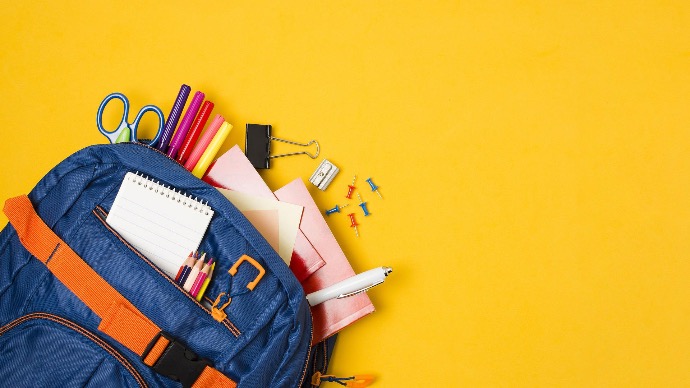
Search the drawers of the house
The second best thing to do is to search the kitchen or office drawers for anything that is missing.
It will certainly be a success if you turn this moment into a game of "first to find". That black pen, half pencil or piece of eraser will become the treasure found in his pencil box.
Once the drawers of the house have been thoroughly examined, the list can be further reduced according to what is found, and the purchase budget is reduced along with the waste that would have resulted from the purchase of the new material.
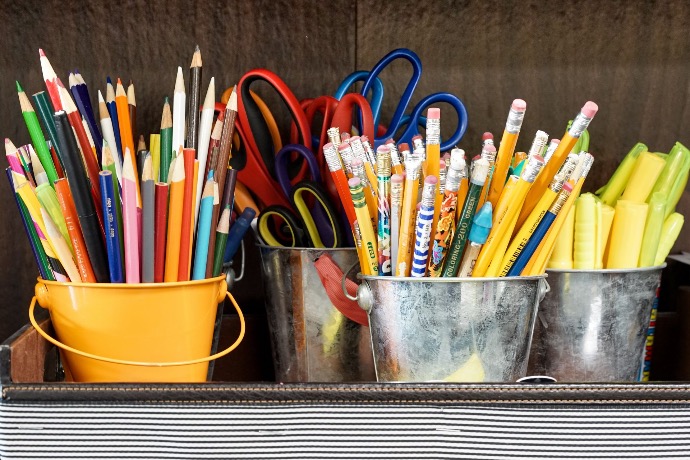
Second-hand: online or in-store even for school
Whether in a shop, on eBay or on Marketplace, there is always a way to promote second-hand deals.
Second-hand shops, contrary to expectations, offer binders, dividers, paper, markers, regular and coloured pencils.
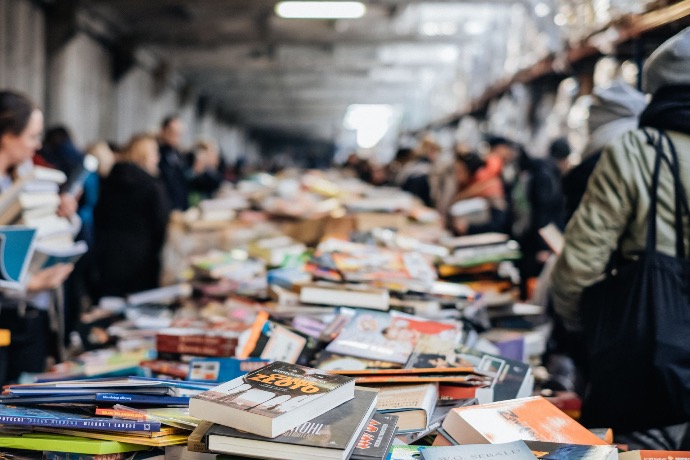
The local stationery shop
Consider that the local stationery store can supply items by the piece and in bulk, whereas the supermarket supplies you in batches of 10 with lots of packaging.
It is an opportunity to support local commerce and to avoid stocking dozens of fluorescent tubes, erasers and ordinary pencils. This type of behaviour encourages over-consumption and takes up space in the home. Unless of course you have 10 children!
Go to the shop with your child and choose solid, reusable products as much as possible. Keeping your items for as long as possible means taking care of your equipment and the planet.
Make your own school supplies
1. A natural glue
It's a flour-based glue that will save you from having all those glues in non-refillable smelly and toxic plastic tubes. Here is the recipe:
Ingredients :
1 tablespoon of cornstarch
1 tablespoon of fine white flour
125 ml cold water
1 teaspoon of white vinegar
Steps :
Pour the cornstarch, flour and water into a bowl and mix.
Then take a saucepan, pour the contents of the bowl into it and bring to the boil
Turn down the heat to max and continue to stir until the mixture thickens.
You can add the white vinegar off the heat, but this is optional.
Just put the result in a small glass or stainless steel jar and you can use your glue with a small brush or a popsicle stick!
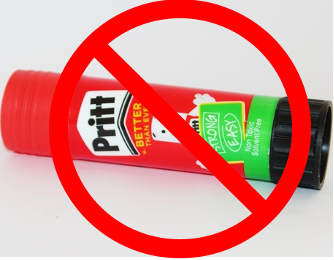
2. A fabric notebook cover
What could be better than to replace the sticky, super annoying plastic to be placed without bubbles on the notebooks with a nice waterproof and reusable fabric notebook cover? Here are the necessary materials:
Scraps of fabric, old clothes or thin curtains
Homemade glue
Vegetable or beeswax for the waterproof version
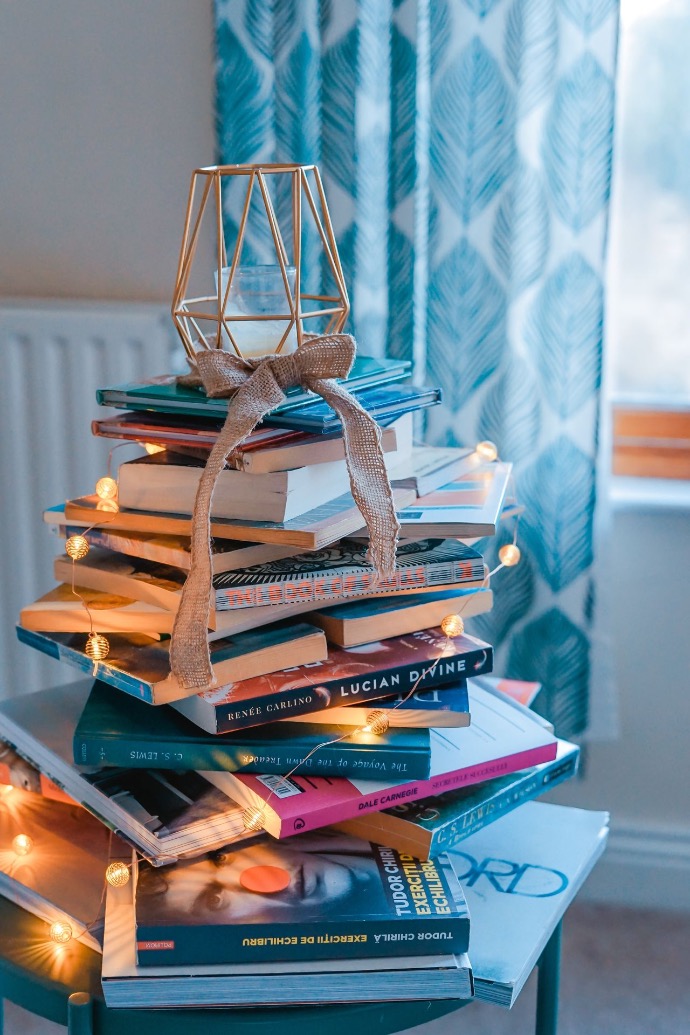
3. A recycled pencil cup
For the pencil pot, nothing could be simpler! You take a glass jar, a tin can (well filed so as not to cut yourself), a clay plant pot, be creative!
Then get your brushes, your best paints and let your imagination run wild. All you have to do is decorate your pencil pot. It's a great activity to do with the family and for the kids.
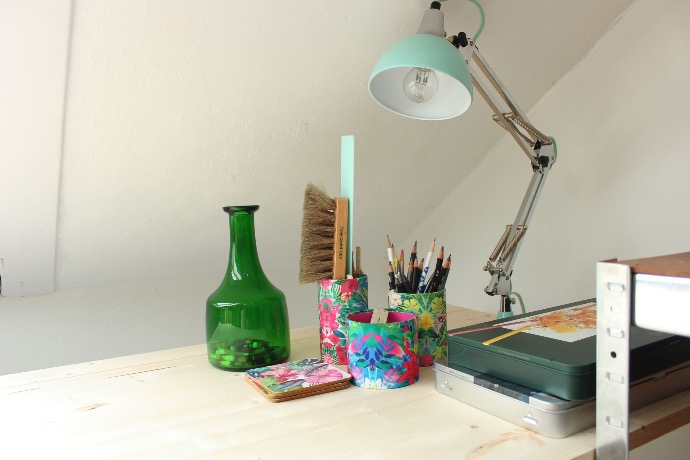
4. Non-toxic paint with edible food
Here is an alternative to the paints so rarely used in the classroom! What could be better than to have non-toxic paints that are also inexpensive? Here is the recipe:
Ingredients :
Charred almonds for black
Coffee for the brown
Beetroot for the pink
Carrots for the orange
Turmeric for the yellow
Wine or grapes for blue/purple/red
Spinach, mint or spirulina for the green
Water
Salt
White vinegar to fix the colour
Steps :
Take a pan and insert the food you will use first and cover with water. Then bring to the boil.
Reduce the heat until the desired colour is obtained. Strain and allow to cool
Pour the resulting mixture into small jars (why not old paint pallets?) and add ½ teaspoon of salt and vinegar to ¼ glass of liquid.
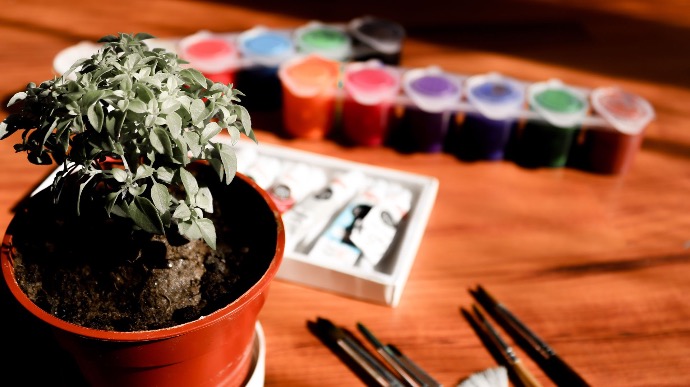
Robust school supplies or nothing!
Even if our children always prefer to have the latest equipment like their friends, it is time for things to change.
And because it's likely that others in the class are thinking about changing their consumer behaviour too, dare to make a change and think about buying robust supplies instead of following the trend.
The following should be considered:
A binder with reinforced edges that can be used for several years or for others on second-hand sale
Binders and folders with metal edges to protect them
A metal or wooden slat and square
Wooden or metal pencil sharpeners may also be preferred
A compass with a physical lock when in use is easier and more durable and prevents it from becoming loose after a while. A sturdy box to store it and protect the points.
Refillable supplies are always more sustainable
Even though shops mostly promote non-refillable school supplies to force you to buy more often, there are refillable alternatives for many school supplies. These include:
The ball-point pen
The highlighter
The pen
The mechanical pencil
ADOC style notebooks
And so on..
Don't hesitate to ask in your favourite stationery store and discover the refillable items on KissPlanet. Don't wait any longer if you are convinced!
I hope you have enjoyed this article and realised that there are simple and fun alternatives to polluting, single-use materials.
See you soon,

